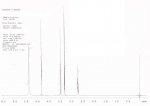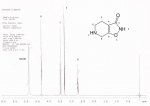Limpet_Chicken
Bluelighter
Assuming it was pure (or almost so) ibotenic acid.
All is not lost. Mods, I hope this isn't classed as stepping over the line, but the identical process occurs in Amanita muscaria when the mushroom is heat dried for use, and that reaction in that context has been discussed openly.
Ibotenic acid decarboxylates to muscimol when heated, a good boil should do the trick.
AFAIK some ibotenic acid if ingested will be metabolised to muscimol itself, but as is, it is a glutamatergic neurotoxin, but little passes the BBB, although if I recall a previous discussion I had in this forum, the conclusion was arrived at (possibly by myself, I can't remember for shit these days) that it may undergo active transport through the blood brain barrier.
Dropped for abuse reasons? FFS, that is rediculous as grounds. If that is good reason to shitcan something new and promising, and going from my experience with muscimol on sleep, and on endurance, then it really would be something to have brought out, then how do they expect to ever bring out new dopaminergic stimulants, or opioids.
All is not lost. Mods, I hope this isn't classed as stepping over the line, but the identical process occurs in Amanita muscaria when the mushroom is heat dried for use, and that reaction in that context has been discussed openly.
Ibotenic acid decarboxylates to muscimol when heated, a good boil should do the trick.
AFAIK some ibotenic acid if ingested will be metabolised to muscimol itself, but as is, it is a glutamatergic neurotoxin, but little passes the BBB, although if I recall a previous discussion I had in this forum, the conclusion was arrived at (possibly by myself, I can't remember for shit these days) that it may undergo active transport through the blood brain barrier.
Dropped for abuse reasons? FFS, that is rediculous as grounds. If that is good reason to shitcan something new and promising, and going from my experience with muscimol on sleep, and on endurance, then it really would be something to have brought out, then how do they expect to ever bring out new dopaminergic stimulants, or opioids.






